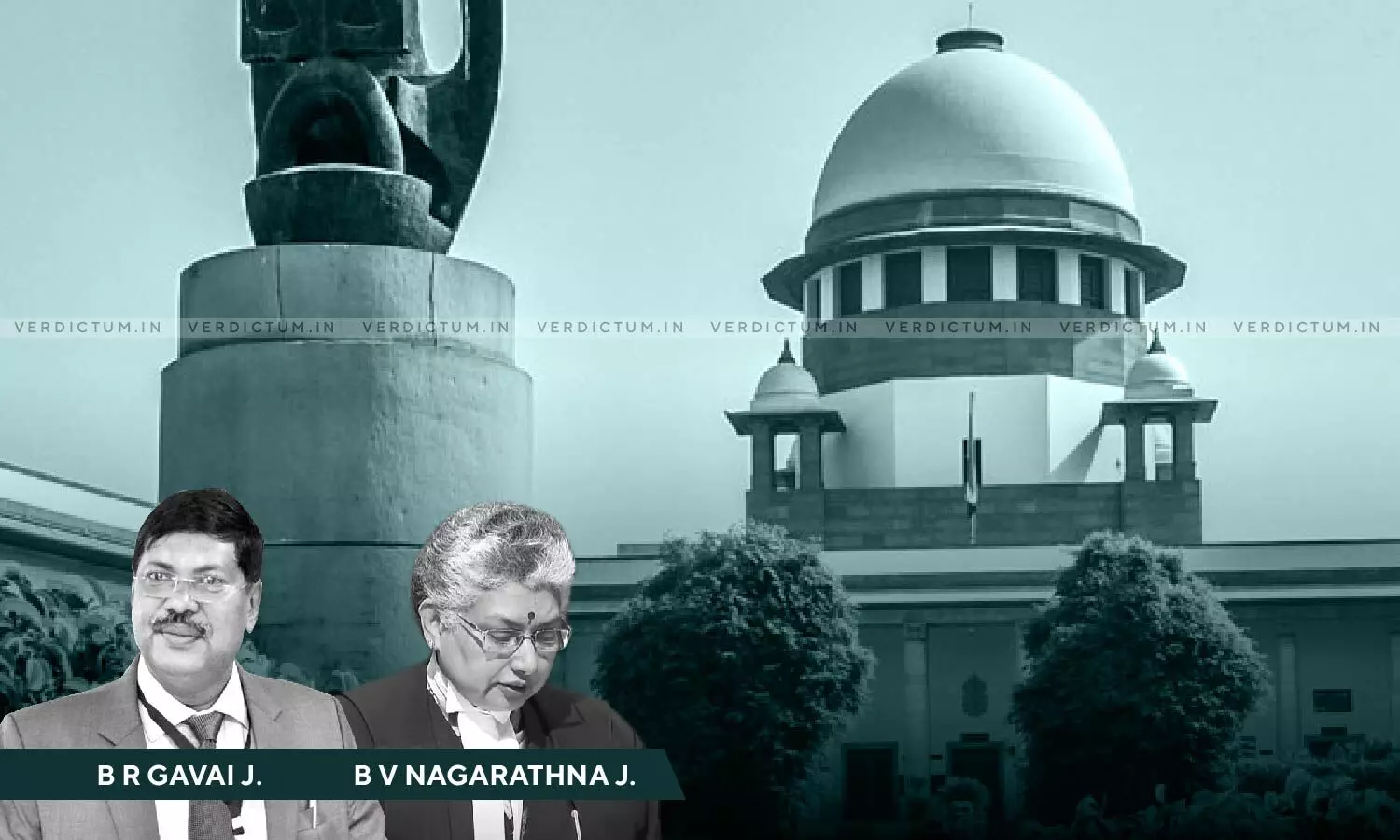
Seniority Cannot Be Reckoned From Date Of Occurrence Of Vacancy Unless Expressly Provided Under Rules- SC
 |
|The Supreme Court on Friday reiterated that in matters related to inter se seniority, any departure from the statutory rules, executive instructions, or otherwise must not be inconsistent with the requirements of Articles 14 and 16 of the Constitution.
The Court said that the seniority cannot be reckoned from the date of occurrence of the vacancy and cannot be given retrospectively unless it is so expressly provided by the relevant service rules.
A Bench comprising Justice B.R. Gavai and Justice B.V. Nagarathna observed that "... the seniority cannot be given on retrospective basis when an employee has not even been borne in the cadre and by doing so it may adversely affect the employees who have been appointed validly in the meantime."
The Special Leave Petition was preferred by direct recruits who were aggrieved with the decision rendered by the Division Bench of the Allahabad High Court which upheld the decision of a Single Judge Bench that quashed the 2005 seniority list and directed that the promotees be placed over the direct recruits for 1997-1998 cadre. The Division Bench of the High Court further directed that the rota system will be applied to direct recruits and promotees appointed in the same recruitment year.
It was contended on behalf of the promotees that the directly appointed ACOs (Assistant Consolidation Officers) were erroneously given seniority over the promotees. The names of the promotees had to be placed in a cyclic order i.e. a promotee followed by a direct recruitee as per rules. Initially, the promotees were appointed as Consolidators in the Consolidation Department and were promoted to the post of ACOs in 1997.
While, the direct recruits argued that the 2005 seniority list was justified on the ground that directly appointed ACOs were placed under the vacancy existed for earlier years and they were appointed subsequently and hence, were given seniority in the quota available in the earlier years.
In the Supreme Court, Senior Advocate S.R. Singh appeared for the appellants-direct recruits, and Senior Counsel Rakesh K. Sharma and Advocate Tanmaya Agarwal represented the respondents- promotees.
Further, the direct recruits said that they were appointed as ACOs on Aug 18th, 1997 while the promotees came to be promoted w.e.f Dec 16th, 1997. Therefore, the 2005 seniority list has rightly placed the direct recruits above the promotees as promotees had not been even the cadre of ACOs when the direct recruits were appointed.
While deciding the appeal, the Supreme Court said, "....sub-rule (3) of Rule 8 of the 1991 Rules would be most important. It provides that, where appointments are made both by promotion and by direct recruitment on the result of any one selection, the seniority of promotees vis-à-vis direct recruits shall be determined in a cyclic order, i.e. the first being a promotee, so far as may be, in accordance with the quota prescribed for the two sources."
The Court termed the 2005 seniority list as 'erroneous' and held that "Such a list was in contravention of the provisions of Rules 18 and 19 of the 1992 Rules. When the 1992 Rules specifically emphasized that, where in any year of recruitment, appointments were to be made both by direct recruitment and by promotion, regular appointments could not have been made unless selections were made from both the sources and a combined list was to be prepared in accordance with Rule 18 of the 1992 Rules, the seniority list dated 29th July 2005, which provided a higher seniority to the direct recruits, is, for the aforesaid reasons, not sustainable in law."
The Supreme Court in its earlier catena of judgments has held that the inter se seniority in a particular service has to be determined as per the service rules. "...... the date of entry in a particular service or the date of substantive appointment is the safest criterion for fixing seniority inter se between one officer or the other or between one group of officers and the other recruited from different sources", the Court observed.
Further, the Court while dismissing the appeal said, "In view of sub-rule (3) of Rule 19 of the 1992 Rules, since the appointments in the same selection/recruitment year were made both by direct recruitment and by promotion, the names were required to be arranged in accordance with the cyclic order referred to in Rule 18 of the 1992 Rules. In view of Rule 18 of the 1992 Rules, a combined select list has to be prepared by taking the names of candidates from the relevant list, as per the quota for the direct recruits. In other words, the first name in the list was required to be that of a promotee."
Cause Title- Amit Singh v Ravindra Nath Pandey & Ors. Etc. Etc.
Click here to read/download the Judgment